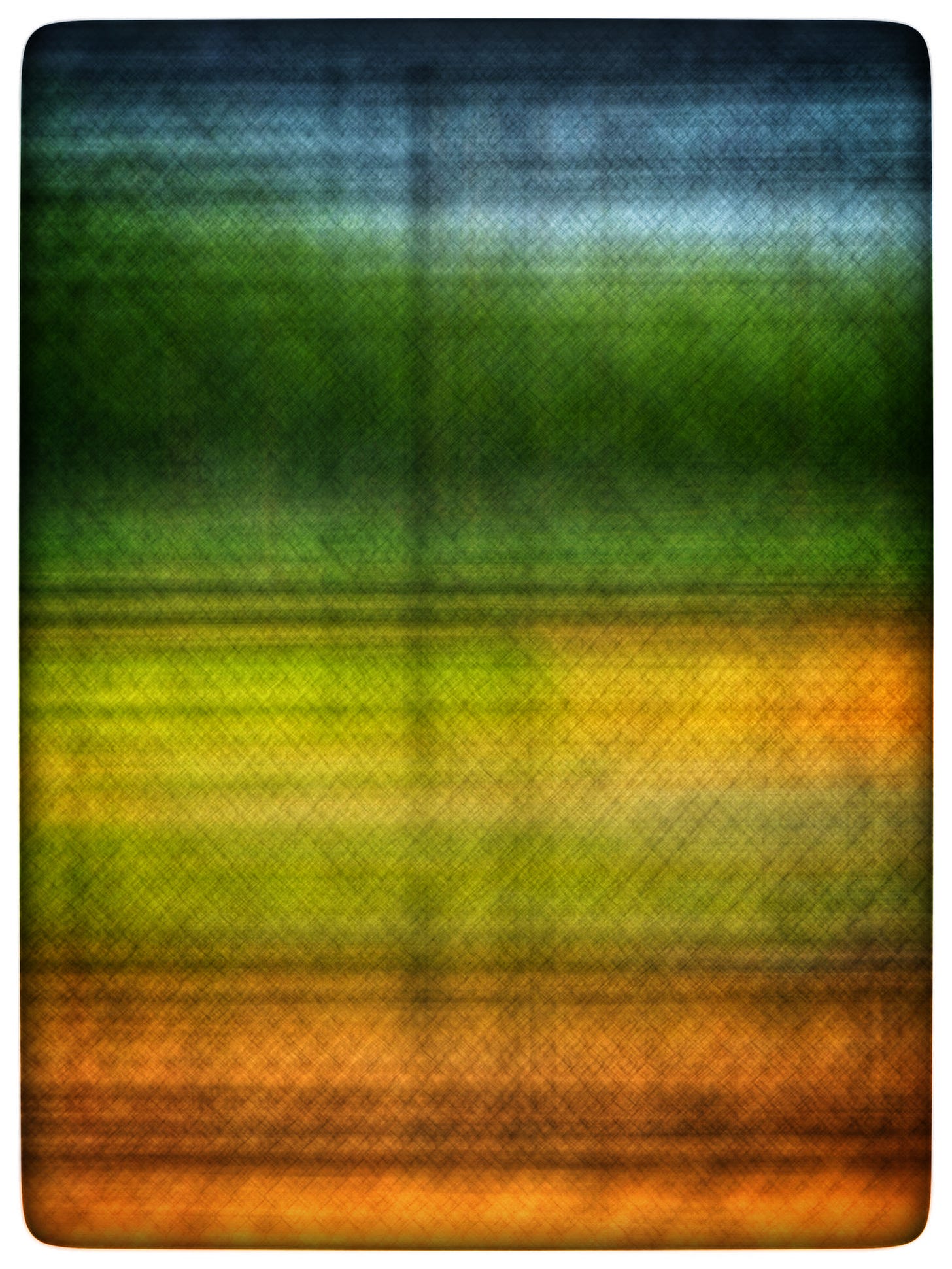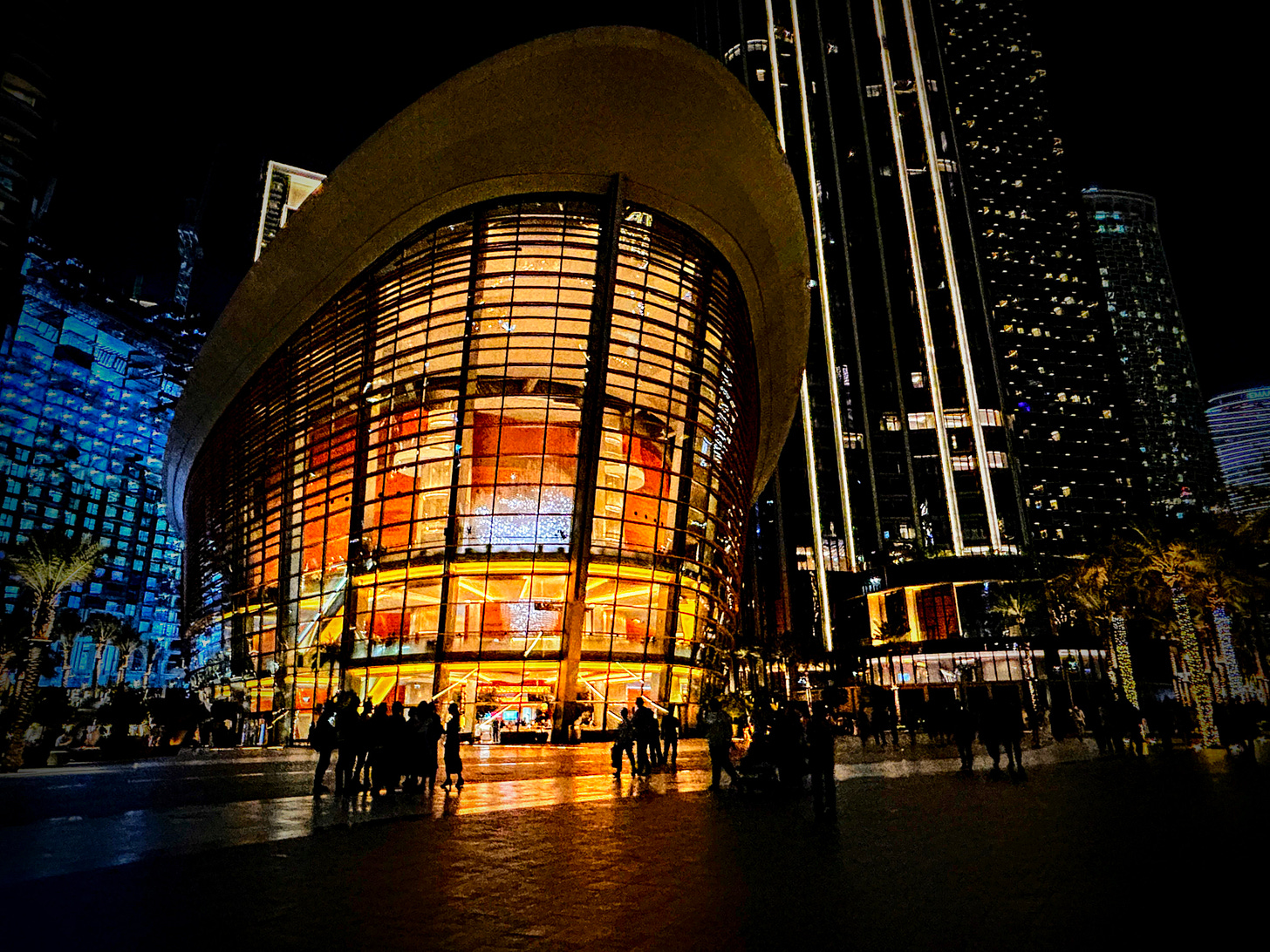The Art of Seeing, Together
What I’m learning about love, photography, and the silent tug between presence and capture
A Moment Beneath the Opera Lights
It was late, and the crowd was thinning out, the hum of footsteps trailing behind us after the fountain show at the base of the Burj Khalifa. Dubai’s night air was soft and warm, lit by the glow of streetlamps and skyscrapers. We had walked a lot that day—malls, markets, metro rides, and the winding stretch around the towering fountain plaza. My wife was ready to call it.
But then we turned a corner.
And there it was.
The Dubai Opera House.
Its curved glass façade shimmered under the lights, like a dhow carved from steel and crystal. Something in me clicked. The light. The lines. The motion. It was the kind of architectural marvel that begged to be photographed—not just once, but dozens of times. From below. From across the water. With slow shutter blur. With angled reflection. I could feel myself slipping into that creative mode, where time bends and the only thing that matters is light and how it moves.
But she was tired. Understandably so. And suddenly I could feel it—the subtle tension pulling between us.
I could have stayed there for an hour, maybe more, chasing images. But she didn’t see the building the way I did. Where I was drawn to the curves and reflections and the way the light shimmered across the water, she was quietly ready to move on.
And there’s nothing wrong with that.
We simply experience the world differently. I’m often swept up by mood, story, light—the feel of a place more than the facts of it. She’s more grounded. Practical. Clear-eyed in a way that steadies us both. And while I’m the one dreaming up the next idea, she’s the one making sure we don’t forget our passports.
It’s not a conflict. It’s a rhythm. A balance we’ve been finding, and re-finding, for decades.
And that night, under the glow of the Dubai Opera, I felt it again: the weight of the camera in my hand… and her presence beside me, reminding me to keep moving.
When the Urge Returns
There’s a feeling I get—one I can’t always explain.
It doesn’t happen all the time. In fact, it comes and goes, like a tide. I’ve lived through long stretches where I didn’t feel especially creative at all. But when I travel—especially now—I feel it rising in me again. That quiet, insistent pull to capture what I’m seeing. To hold it somehow.
Part of it, I know, comes from the tools. The digital revolution made photography more intuitive, more expressive. Slow Shutter Cam. Spectre. The iPhone’s ability to see what I’m seeing. These tools have helped me reawaken the part of myself that longs to create—not for show, not for anyone else’s approval, but to say, this moved me. And now I want to hold it still, just for a moment longer.
But part of it runs deeper.
Travel has always felt rare to me. Special. Sometimes I think that’s why I photograph the way I do—hungrily, as if each trip might be my last. That might sound dramatic, but it’s not. It’s the honest voice of an educator, a father, someone whose travels have often been shaped by circumstance and work, and timing. I know how lucky I’ve been. And I know how quickly time moves.
When I’m walking the streets of a new city—light shifting through narrow alleys, unfamiliar sounds curling around corners—I feel awake. And in that awakening, there’s this urge to document, to create, to leave some trace. Not to prove I was there, but to remember how it felt.
“I don’t take pictures because I’m afraid I’ll forget. I take them because I want to build bridges back to the moments that matter.”
From Brush to Lens
That pull isn’t limited to photography. Years ago, I found that same urgency in paint.
There were mornings I would tiptoe downstairs in my pajamas before Erica was even awake, standing at my easel, lost in color and form before the day began. I’ve painted abstract pieces that felt like emotion made visible. I’ve painted realistic ones too—quiet homages to the world as it is.
While I haven’t painted in years, the drive is still there. It just moves. It finds new mediums. Right now, it lives in my lens.
Maybe that’s why I’m drawn so often to blurred, impressionistic photographs—images that hold feeling more than detail. They’re the sister of those expressive abstract paintings I once made. They carry something real, but not literal. Something remembered, but slightly out of reach.
Erica, by contrast, sees the world more clearly—more directly. Where I might photograph the same scene ten different ways, trying to find the mood that matches my memory, she’ll take one photo and smile, already satisfied. She captures it her way, then walks on, eyes forward. And that’s a kind of wisdom, too.
My memory fades more quickly than hers, I think. And photography, for me, becomes the breadcrumb trail. The thing I can return to when I want to revisit a feeling or remind myself that I was here, and it mattered.
“It’s more like a deep awareness that these seasons don’t last forever.”

Quiet Agreements
If I’m being honest, Erica and I are still learning how to travel like this together.
Most of our earlier trips—across the U.S., or with our kids—didn’t press on this creative tension as much. We were navigating logistics, schedules, and parenting. There wasn’t much time to lose ourselves in wandering.
But now, with more space and possibility, and places that practically demand to be photographed—I’m feeling that familiar tug again. And I know I need to meet it without losing connection.
We’ve only had a couple of ‘big’ trips—Iceland and the UAE—and on each one, I’ve noticed the same pattern: I get swept up. I want to linger. She takes a few photos, smiles, and is ready for what’s next. Neither of us is wrong. We just move differently.
“These aren’t hard rules yet. They’re hopes. Sketches of the kind of traveler—and partner—I want to be.”
So maybe I will wake early and go off with my camera before breakfast. Maybe I put the phone away after I’ve made a few images inside some breathtaking cathedral. Maybe I simply ask more often, “What do you want from this moment?” and really listen to her answer.
Because I know this: I don’t want to come home with a thousand photographs and realize I missed the most beautiful thing of all.

Love Is in the Trade-Offs
There have been times—more than I’d like to admit—when I’ve put the phone away or slung the camera over my shoulder, and something inside me has bristled. Not loudly. Not in anger. But in a quiet, lingering way that sits somewhere between resentment and regret.
I’m not proud of that.
Because it’s not about Erica. It’s about the silence between us. The assumptions. The unsaid things that sneak into the space where communication should be.
I think we’ve both been guilty of that—entering new experiences with different expectations, but not saying them out loud. She might want to take it all in. I might want to chase one perfect shot. But we don’t always talk about it. We just move forward, hoping the other understands.
And when that silent understanding doesn’t line up, there’s friction.
What I’m learning is that the answer isn’t more photos or fewer photos. It’s communication. It’s care. It’s remembering that there’s more than one way to see.
The Photograph Not Taken
I wish I could end this with a perfect image—a moment I didn’t photograph but can still see clearly in my mind.
But the truth is… I can’t quite recall one like that. Not vividly. Not cleanly.
And maybe that’s the very reason I reach for the camera in the first place.
It’s not that I don’t remember things. Some memories are etched—like standing on shag carpet in 1974 while Neil Diamond’s Song Sung Blue played from the reel to reel tape deck.
But most memories don’t stick unless something roots them.
That’s what I’ve learned about myself: a memory sticks when it connects to another memory, a photo, or a video. But also to a scent, a sound, a texture.
I can smell saltwater and be instantly transported to the deck of a fly-fishing boat in the Persian Gulf. I can smell burning firewood and find myself in a Guatemalan market. A familiar song can collapse decades in a single note.
These are the anchors. And photographs, for me, are part of that same anchoring process.
This post isn’t a resolution. It’s a beginning. A way of naming something, I’m still learning how to live: how to honor my urge to create without missing the very moment I’m trying to hold.
How to see through my lens and still be fully present, side by side with the woman I love.
How do you balance creativity with connection when you travel? I’d love to hear what works for you.




Yeah, I remember the first trip you made together—the hike up the mountain trail and how you both approached it. You, I am sure, enjoyed every step on the trail while she cast her walking stick ahead and mumbled down to pick it up again, then throw it on ahead again. Her object was to get there, yours was to experience each moment, each step.